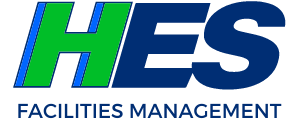Schools at every level are seeking consistent, reliable results from their facilities management teams. Staying organized, especially when it comes to maintenance projects, assets, and equipment, can save significant time and money.
Whether it’s an opportunity for improvement or a long-term success, your maintenance program has a story to tell. While the “main character” in your school’s story will be the facilities management partner you rely on to keep maintenance on track, a close second is a well-maintained CMMS (computerized maintenance management system).
CMMS: A powerful tool in the right hands
Used to its full potential, a CMMS supports you and your facilities management partner in documenting, updating, and sharing data about the maintenance performed on your institution’s valuable equipment and assets.
And while anyone can collect data using a CMMS, a superior facilities management team will be both transparent and accountable in the ways in which they analyze, interpret, and share findings on your specific program.
Start with a professional team
As mentioned above, the benefits of a CMMS come from having a dedicated, experienced team of professionals to manage it. If your maintenance provider relies on tucked-away notebooks or spreadsheets to track assets or maintenance tasks, there’s a much greater chance something important will slip through the cracks.
Instead of relying on hard-copy documents that are only accessible to a few, your facilities management provider can leverage a CMMS to:
- Reinforce accountability
- Promote transparency
- Increase productivity
- Improve efficiency
How CMMS technology benefits schools
Your maintenance program supports your educational mission in clear, concrete ways. By making sure equipment and systems are clean, safe, and well-maintained, administrators are ensuring students are comfortable and undistracted in their learning environment.
Here are some important ways your facilities provider can use a CMMS to contribute to that comfort:
Asset registry & management
This basic task is perhaps the most important. Your CMMS can detail precisely what equipment your school has, where it’s located, and its key components or parts. Facilities professionals will also record the make, model, serial number, purchase information, warranty, and more in your CMMS.
We cannot stress enough how much time and money can be saved with an accurate, complete asset registry. Your CMMS is built to record this information – and more. It all depends on the organizational skills and diligence of your maintenance team.
Cost savings of preventive maintenance
Based on a thorough asset registry and inventory, your facilities management partner can create a robust preventive maintenance (PM) plan.
Traditionally, preventive maintenance often gets pushed down the to-do list when schools are facing budget concerns. It’s tempting to put it off, but that’s a “penny wise, dollar foolish” strategy that can backfire too easily. When we’re working with our customers’ expensive equipment, we want to be absolutely sure it’s maintained properly – instead of crossing our fingers that it won’t need expensive emergency repairs.
Ask your maintenance provider to show your administration the potential savings of a comprehensive PM plan. The right provider will be more than happy to share this info and should be flexible in meeting your school’s needs while being mindful of your budget.
Improved work order efficiency
Work order efficiency is a complex process. It’s about creating the work order in a timely manner – but also about efficient job routing. Your maintenance partner can leverage a CMMS to ensure assigned team members have the right skill set and enough time to get the work done quickly.
The magic of a properly managed CMMS is in its ability to prioritize work orders in relation to each other, available staff, and the unique conditions of your educational institution. Work order routing relies on a complex matrix of information, something a spreadsheet alone just can’t achieve.
Real-time communication via CMMS
One of the coolest aspects of a CMMS is how efficiently your maintenance team can receive and share information. From the moment a need is identified, information can be shared in live time.
For instance, photos of a water leak taken by a staff member can be used to create a work order. Dynamic routing and workflow management means the order is automatically assigned to team members with the right experience, at the right time. From there, your maintenance partner can see up-to-date progress via the CMMS – including costs for people, equipment, and supplies needed to complete the job. And finally, when the work order is fulfilled, supervisors can receive instant notification that it’s complete, along with photo verification.
Over time, this real-time data can be used to track your maintenance partner’s performance and ability to hit pre-determined KPIs. Facilities pros are able to spot trends – whether for successes or challenges – and share those insights with you, for continuous improvement over time.
Using CMMS for safer workplaces
One last, very important benefit of a CMMS is its ability to track and share safety information. From safety data sheets to lock-out/tag-out procedures and more, your facilities management partner can improve regulatory compliance and help workers stay safer, more aware, and better trained.
Work with the right facilities management team
Want to know more about how we use CMMS technology to support our valued customers? Contact us at info@hesfacilities.com.
Disclaimer
The illustrations, instructions, and principles contained in this website are general in scope and for marketing purposes. We assume no responsibility for: managing or controlling customer activities, implementing any recommended measures, or identifying all potential hazards.

